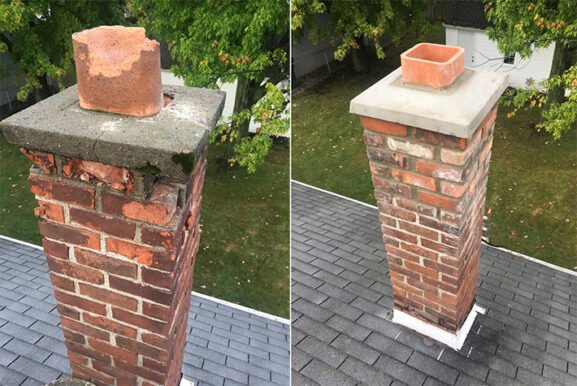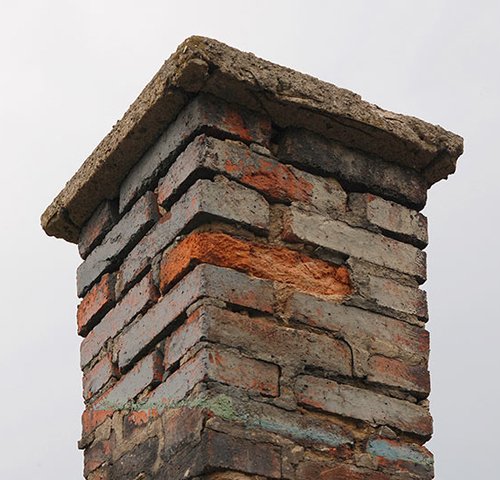Why You Should Address Cracked Chimney Flue Repairs Before They Get Worse
Key Takeaways
- Cracked chimney flue liners can lead to major safety hazards including house fires and carbon monoxide exposure
- Repair costs vary widely depending on the damage and liner type, ranging from $250 to over $5,000
- Early inspections and routine maintenance can dramatically reduce long-term repair expenses
- Homeowners should understand repair methods like relining, patching, or complete replacement
Understanding the Role of the Chimney Flue
The chimney flue is more than just a passage for smoke. It’s a critical component that directs gases safely out of the home while protecting the chimney structure from heat and corrosion. When a flue liner cracks, its ability to do this is compromised. Heat can reach combustible areas, and dangerous gases like carbon monoxide might leak into the living space.
In homes with older masonry chimneys, clay tile flues are common. While durable, they are prone to cracking from heat stress, water damage, or chimney fires. Stainless steel flues, used in many modern systems or as retrofits, are less prone to cracks but can still be damaged over time.
Addressing cracks early is essential not just for performance but for safety. Left unchecked, small cracks can expand and lead to major structural damage or life-threatening issues.
Factors That Influence the Cost of Flue Repairs
The cost of fixing a cracked chimney flue can vary significantly depending on several factors. These include:
Type and Extent of Damage
Hairline cracks might be patchable with sealant, costing as little as $250 to $500. However, if entire tiles are damaged or missing, repairs can escalate quickly. For major structural compromise, a full liner replacement might be needed.
Type of Flue Liner
Clay tile liners are relatively cheap to patch, but labor-intensive to fully replace since they often require breaking and rebuilding sections of the chimney. Stainless steel liners are easier to install but more expensive upfront. Expect to pay $2,000 to $5,000 or more depending on height and diameter.
Chimney Height and Accessibility
Two-story homes or steep roof pitches increase labor costs. Difficult access often requires special scaffolding or lifts, which adds to the final bill.
Local Labor Rates and Permit Costs
In areas with higher costs of living, such as New York or New Jersey, labor charges and permit fees can drive up the total significantly. Local codes may also require inspections or licensed professionals, increasing overall expenses.
Common Repair Methods and Their Price Ranges
When a chimney professional evaluates a cracked flue, they’ll usually recommend one of the following solutions based on the severity and location of the damage.
Flue Patching
If cracks are small and isolated, a technician may apply a ceramic sealant or cast-in-place material to patch the liner. This is an affordable solution for early-stage damage and typically costs between $250 and $1,000.
HeatShield Repair Systems
For clay tile flues, HeatShield is a popular product that resurfaces or reinforces the interior with a special mortar-based system. It’s more durable than simple patching and can repair multiple cracks in one process. Costs typically range from $2,000 to $3,500, depending on chimney height and complexity.
Stainless Steel Relining
When damage is too extensive to patch or seal, installing a new stainless steel liner is often the go-to solution. These liners are flexible or rigid, depending on the flue’s path, and offer high resistance to future damage. While expensive, they are long-lasting and safer than cracked clay. Installation can run $2,500 to over $5,000.
For a technical breakdown of liner standards and materials, the Chimney Safety Institute of America (CSIA) offers detailed guidance on chimney liners.
Why Timing Matters with Flue Repairs
Ignoring a cracked chimney flue may seem like a way to save money short-term, but it often backfires. Even small cracks allow moisture and gases to infiltrate the chimney structure. Moisture expands with freezing temperatures and worsens cracks over time, leading to costly brickwork or crown damage.
There’s also the health and safety risk. A damaged flue can allow deadly carbon monoxide to seep indoors. Since the gas is odorless and invisible, leaks may go unnoticed until symptoms appear. This risk grows with use of gas fireplaces or wood-burning stoves in colder seasons.
Tackling flue issues in the off-season (spring or summer) can also reduce repair costs. Chimney professionals are often less booked, and you can avoid delays when colder months roll in.
Preventative Measures That Can Reduce Future Costs
Routine inspections can prevent small flue problems from becoming large-scale repairs. Certified chimney sweeps recommend an annual inspection, particularly after a major weather event or chimney fire.
In addition to inspections:
- Use chimney caps to reduce water entry and animal nesting
- Avoid burning wet or unseasoned wood, which increases creosote buildup
- Schedule periodic cleanings to reduce corrosion and flue stress
For long-term cost control, homeowners may also consider upgrading older clay tile flues to stainless steel during other fireplace remodels or relining projects.
Choosing the Right Professional for the Job
Not all chimney repair services are created equal. It’s important to hire a technician certified by reputable organizations like the CSIA or National Fireplace Institute. These credentials ensure that repairs meet safety standards and follow best practices.
Always ask for a written inspection report and cost estimate before agreeing to any work. Beware of “too-good-to-be-true” deals — especially for relining — as low bids may cut corners or use substandard materials.
Online reviews, referrals, and company history should all be part of your evaluation process. A reliable contractor will take the time to explain their findings and recommend repairs tailored to your chimney type and usage.
Taking Smart Action When a Flue Crack Appears
The cost of cracked chimney flue repair can vary, but one thing is constant — acting quickly is always the smartest option. What begins as a hairline crack can spiral into thousands in damage or, worse, lead to health and safety risks for your household. By scheduling annual inspections, keeping your chimney dry, and addressing issues as they arise, you’ll protect your home, your budget, and your peace of mind.

